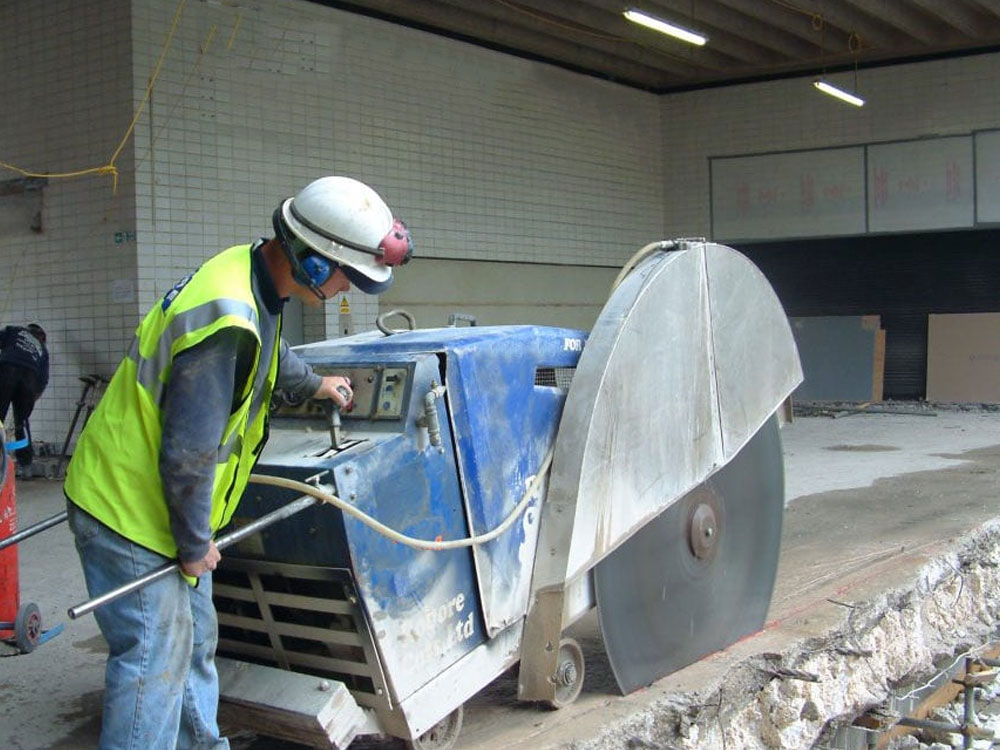

Floor saw cutting (also known as slab sawing) is the process of using a self-propelled walk-behind saw equipped with a diamond-tipped circular blade to make precise cuts in horizontal concrete or asphalt surfaces such as floors, pavements, roads, and slabs. These saws can be diesel, petrol, hydraulic, or electric-powered, depending on the job site and environmental needs.
Used to cut control joints or expansion joints in freshly poured concrete to prevent random cracking due to thermal movement or shrinkage.
Precise cutting of pavement or floor slabs to create trenches for plumbing, electrical conduits, or drainage systems.
Cutting asphalt or concrete roads for repair, resurfacing, or widening.
Creating clean edges for patching or removing damaged sections.
Cutting floor sections for elevator pits, stair openings, or machine foundation adjustments.
Used during partial demolition of concrete floors or slabs without damaging adjacent structures.
Pre-cutting sections of slabs before lifting or breaking them apart, improving safety and control during removal.
Opening floors for the installation of mechanical equipment, vaults, or underground tanks.
Walk-behind floor saw (petrol, diesel, electric, or hydraulic)
Diamond-blade (size varies by depth requirement)
Water system for blade cooling and dust control
Surface Preparation: Area is cleared and marked according to the cut layout.
Saw Setup: Blade is selected based on depth and material; saw is aligned with markings.
Sawing Operation: Operator moves the saw along the surface, controlling depth, speed, and water flow.
Slab Handling: After sawing, sections may be lifted out using cranes, forklifts, or demolition tools.
© 2025 Rukn Alabtal Design By: sialweb